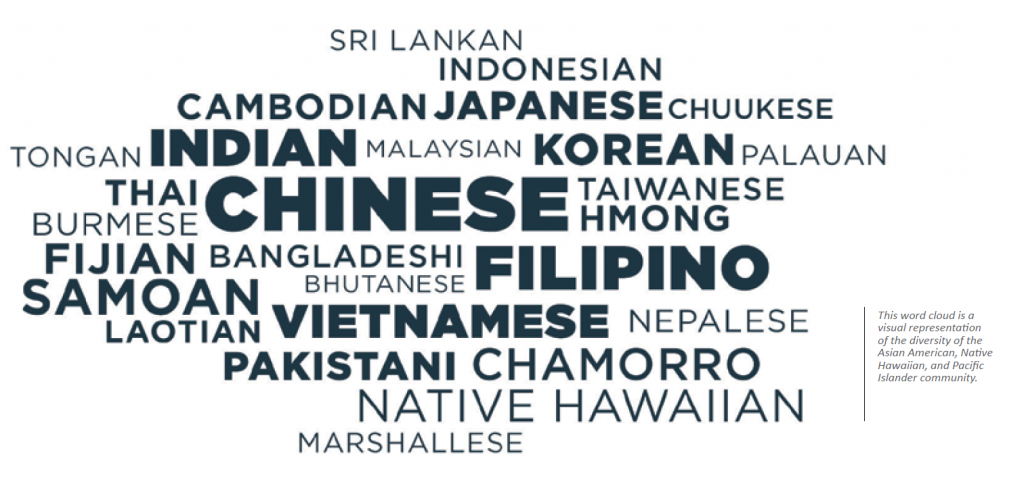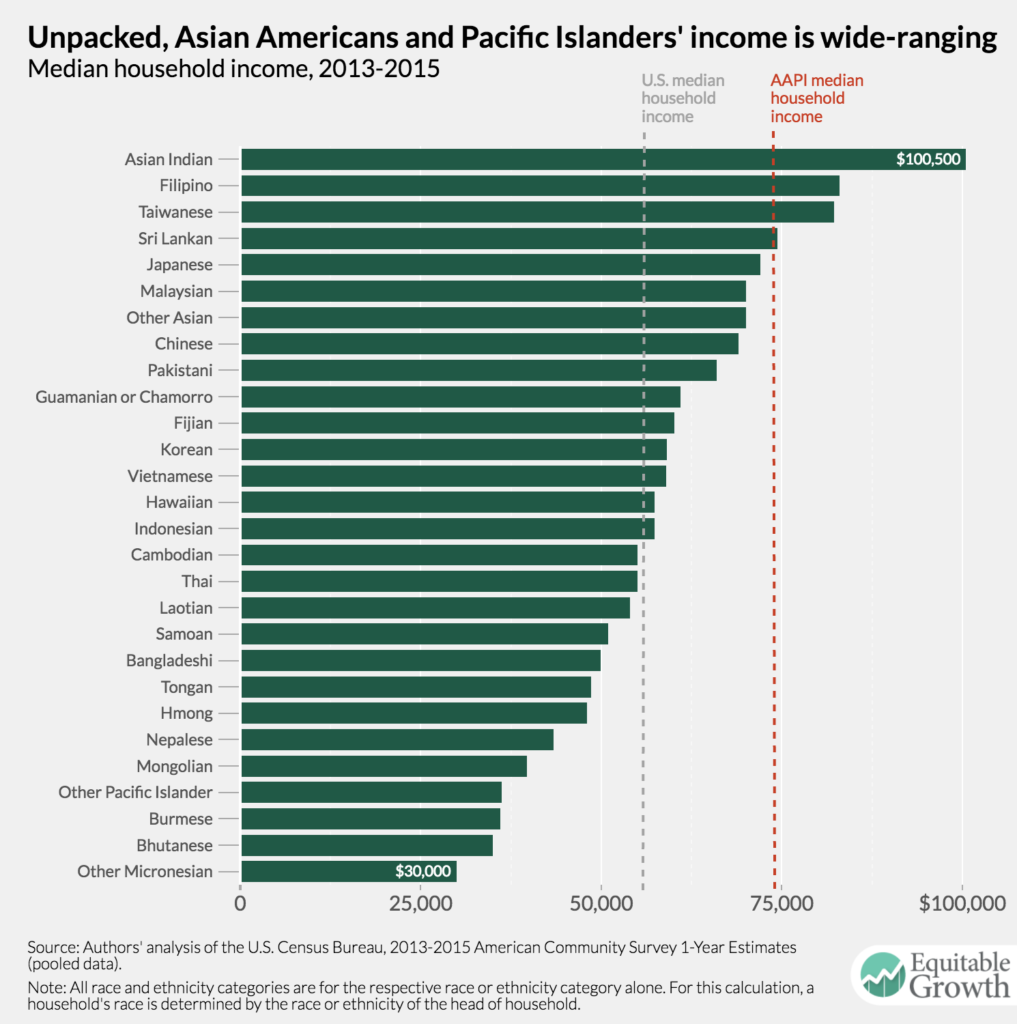
The Asian American and Pacific Islander (AAPI) community is not a monolith.
Representing over 18 million people, AAPIs are a diverse, fast-growing population that includes Americans who identify with one or more of numerous East Asian, South Asian, Southeast Asian and Pacific Islander ethnic groups. Even the most populous of of AAPI sub-groups — Chinese Americans, Indian Americans, and Filipino Americans — individually comprise less than one-quarter of the total AAPI population.
And yet, the federal government still largely fails to collect data that reflect the diversity of the AAPI community; instead, most federal agencies follow an archaic standard — established in 1997 — wherein they lump together all AAPI into the two broad categories: “Asian” or “Native Hawaiian and other Pacific Islander”. Such a generalizing approach misses the nuance of the AAPI community, and washes away the specific socioeconomic challenges faced by AAPI sub-groups.
Aggregation of AAPIs into a single monolithic group allow the data from some AAPI sub-groups to overpower data from other sub-groups. Studies of median household income that fail to disaggregate data for AAPIs might, for example, result in headlines blaring that our community’s earners bring home more money compared to other racial or ethnic groups — a conclusion that would seem to provide evidence in support of the Model Minority Myth.
However, data disaggregation reveals that this conclusion is inaccurate: in fact, the median household income is highly variable across the ethnic subgroups that comprise the AAPI community. Whereas some ethnic groups earn a high median household income, the vast majority of AAPI ethnic sub-groups earn well below the median AAPI household income.

For some AAPI ethnic sub-groups — many of them Southeast Asian American and Pacific Islander — the median household income also falls far below that of the average American household, and scarcely above the poverty threshold for families with children. The same pattern holds true when it comes to public health issues, the gender wage gap, higher education access, and other metrics of economic mobility: inaccurately aggregated data paint a rosy socioeconomic picture for the AAPI community while obscuring those AAPI who are actually struggling.
Clearly, the AAPI community is complex and diverse, and disaggregated data are necessary to unmask these nuances. Without these data, devising public policy to address socioeconomic disparities that disproportionately impact certain AAPIs becomes infinitely more difficult. As a result, too many AAPIs find themselves rendered totally invisible by incomplete and inaccurate socioeconomic data regarding AAPIs that — when not disaggregated — would seem to buoy up the false narrative of the Model Minority Myth. And so, too many AAPIs find themselves totally marginalized and underserved by a system that fails to count them in. There’s a good reason why many have described data disaggregation as one of the most important modern civil rights issues facing AAPIs.
Says the Asian Pacific American Labor Alliance (APALA) in a statement:
Federal agencies are not required to collect detailed data on Asian American, Native Hawaiian, and Pacific Islander communities. This means our communities are misrepresented in major policy decisions, and often are left out or underfunded as a result.
However, we can change this. The federal White House Office of Management and Budget (OMB) is asking for public comments on modernizing its 1997 standards for collecting and reporting race and ethnicity data. All federal agencies must follow these standards.
In contrast to the detailed racial and ethnic categories offered by the US Census, most federal agencies follow standards established in 1997 by the White House Office of Management and Budget (OMB). That standard does not require most federal agencies to collect disaggregated ethnic data for the AAPI community. However, we now have the opportunity to change that.
For the past month, the OMB has asked the public to comment on the possibility of revising their guidelines for the collection of racial and ethnic data for study by federal agencies. This is our chance to tell the OMB in one collective voice that we want all AAPIs to be counted by the government.
ACT NOW! Please take a moment right now to head on over to this site — created in partnership between APALA, the Asian & Pacific Islander American Health Forum (APIAHF), the National Council for Asian Pacific Americans (NCAPA), Asian Americans Advancing Justice, and the Southeast Asian Resource Center (SEARAC) — and fill out this form to submit a comment to the White House Office of Management and Budget asking that they revise their guidelines and implement federal policy to collect disaggregated AAPI racial and ethnic data. Deadline for comments is TODAY, April 28, 2017.
Please also share this post, as well as the link to submit your comments, widely among your network.
